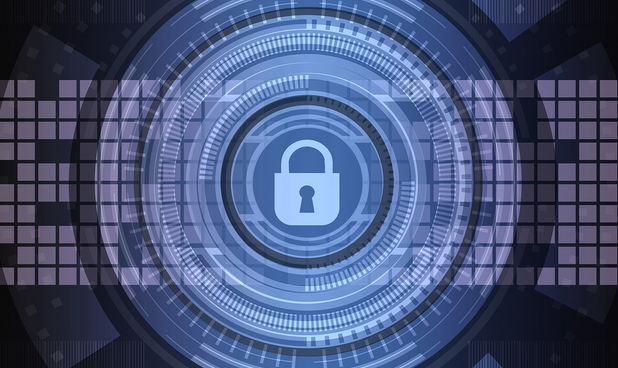8 Ways To Keep Your Internet Connection Secure

The internet is our go-to place for finding anything and spending some ‘me’ time to distract ourselves from the mundane daily schedule of our lives. We trust the internet to have our backs. But when it comes to security, does it ensure that?
Recently, I was checking out some online cryptic games and puzzles and found out about the famous Creepypasta Backrooms and mystery rooms in Bangalore. This got me hooked, and I spent an hour researching and going through different stories and podcasts to read more of the enigmatic clues and riddles. At one point, my internet connection took me to a similar site spammed with ads and bait links. I found it untrustworthy and left immediately.
If I’d clicked on any link on the website I’m talking about, a third party would’ve probably stolen my data or corrupted my device. And from this, I realized that cybersecurity threats and data breaches have also become a common aspect of the internet. While we are relying on it today for every small thing, it has now become essential for us to secure our connection and protect ourselves from any cyber-attacks.
To help you out with the same, here are eight easy and reliable ways through which you can secure your internet connection:
1. Change the default name and password of your internet network
The default name of your internet network is the SSID or Service Set Identifier. And you can easily change its default name and password through these simple steps:
- Start by opening the Windows Command Prompt
- Once the prompt opens up, type in “ipconfig” in the space provided
- Then you have to locate your IP Address
- Once you have found it, type in your IP Address in the address box of your browser
- After that, you will have to type in the login credentials of your router correctly
- Then open up your Wi-Fi settings
- Now, you can easily change the SSID and password to anything that you want
2. Create a strong password

One of the best ways to defend your internet connection from security breaches is by using a strong password, as they’re less prone to data leaks and hacks. Here’s how you can make one for yourself:
- Make sure to create a long password that has at least characters
- Use a combination of upper-case and lower-case alphabets, numbers as well as special characters
- Avoid using common phrases or your data
- Create a unique password
Also Read: Top Software Testing Tools
3. Keeping your system and networks updated

Updating your router regularly is essential for ensuring internet security. Whenever the manufacturers of the routers detect any vulnerability, the firmware on the routers gets updated accordingly. So, just like you receive updates on your phone or laptop, your router needs to be checked for upgrades and updated on time.
4. Limit access to your internet network
Avoid giving access to your internet network to people you do not know well. The higher the number of people accessing your internet network, the higher the chances of security threats and breaches.
Thus, you mustn’t provide access to your internet connection to random people and unknown devices unless there is any specific reason.
5. Consider turning on your encryption
Using encryption is one of the smartest and best ways to secure your internet connection. Here’s how you can use encryption to secure your internet connection:
- Start by going to the settings option on your router and then look for the security option there
- Once you find it, search for “WPA2 Personal Setting”. If you cannot find any such option, you can look for “WPA Personal” and click on it. (Remember, the routers that do not show WPA2 Personal Setting are mostly older and more vulnerable versions. So, you should consider replacing it with the latest version)
- Now, set the encryption type to “AES.”
- Then you have to enter a password or a network key. Note that this password is different from the password of your router. It connects all your devices to your Wi-Fi network.
6. Relying on firewalls

Firewalls are a boundary between your safeguarded internet network and any unauthorized user or network. Many users even use a firewall alongside antivirus software and identity theft protection to further strengthen the security of their network.
These days most routers come with their pre-loaded firewall option, which can help users ward off unwanted traffic from their networks. However, the router firewalls are often not activated by default, so you might have to do it. For this, you can:
- Start by logging into your router’s settings with the help of your IP Address
- Check under the advanced settings options of your router to find the firewall option
- Once you find it, activate it immediately
7. Turn off your WPS settings
WPS or Wi-Fi Protected Setup is a function that allows your devices like smartphones, laptops, and other gadgets to pair with your network. While it is convenient to use when you have many devices that you need to connect to your internet network, it also leaves gaps for hackers to easily hack into the system. So, to secure your network, you might want to consider turning off your WPS setting.
8. Disable remote access to your network

The remote access feature on your router allows you to easily access your network anywhere as long as you have an internet connection. However convenient as it may sound, it also opens up several loopholes.
It increases the chances of hackers hacking into your network with relative ease. Furthermore, if you also haven’t changed the default password and name of your Wi-Fi, the chances of security threats are higher. Thus, it is only better to turn off the remote access feature on your router (via the remote access settings).
Final Words.
These are some of the most efficient and simple steps to secure your internet connection. But the virtual world is vast, and things keep getting updated regularly. So, don’t stop at this list here. Explore and find out more ways to help you in the same direction. These are your beginner steps, and if you want to go for advanced protection, there are various methods for you to do the same. All you have to do is stay updated and well-informed at every step to protect yourself from third-party attacks.
Also Read: Full Form of AD and BC with Full details




